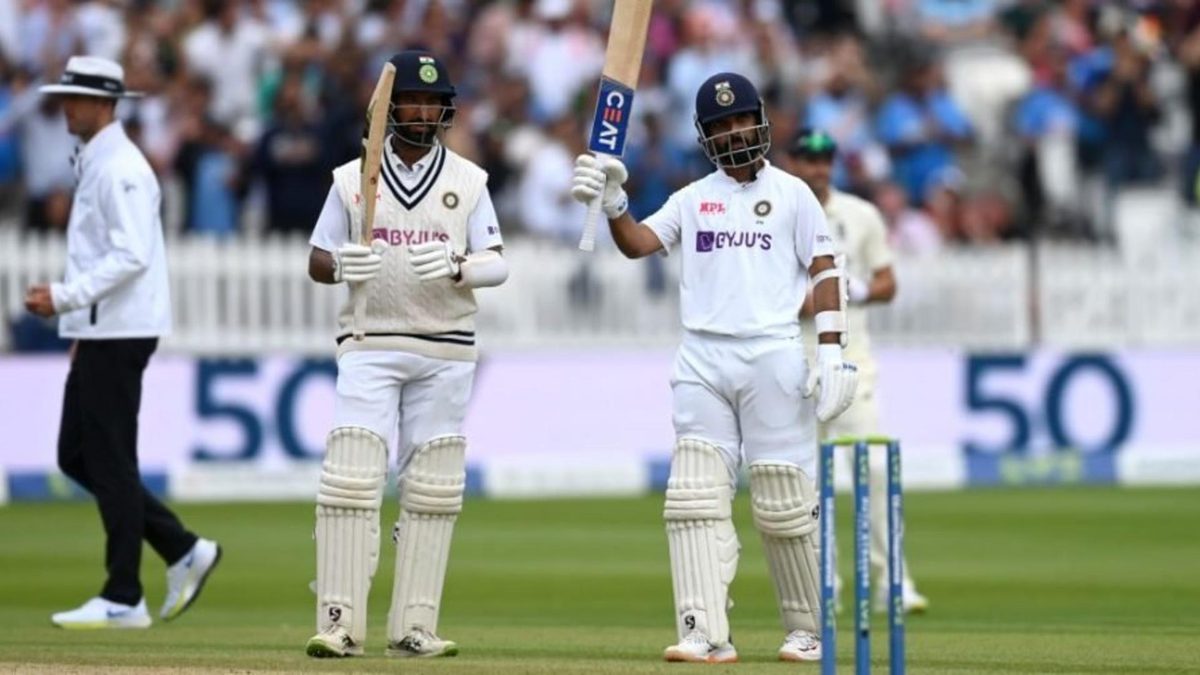
The manner of India’s collapse opened up past wounds, especially their infamous disintegration at Adelaide. It’s time India finally identify a long-term plan past Cheteshwar Pujara and Ajinkya Rahane, writes Aadya Sharma.
And so, it all comes crumbling down. The whiff of the Lord’s success was still floating in the air when an all-pace English attack, bearing a new look after another round of injuries, bounced cannons off the Headingley pitch to make India’s batsmen do funny things, completing an annihilation in 40 overs.
KL Rahul, the hero at Lord’s, fell in the first over. Virat Kohli, in the midst of an astonishingly long century-less spell, officially became James Anderson’s ‘bunny’. Rishabh Pant characteristically tried to go after the bowling, ended up edging a loose waft, and left India five down for 58. Rohit Sharma battled hard, but even his 105-ball blockathon didn’t stave off much embarrassment. The tail surrendered as meekly as it usually does, proving Lord’s was just a happy anomaly.
In the middle of all that, Cheteshwar Pujara and Ajinkya Rahane, the treasurers of India’s middle-order wealth, left with another pair of uninspiring scores. Pujara is nearing 90 Tests, Rahane is close to 80. Pujara has scored 18 centuries, the last of which came nearly 32 months ago. Since Rahane’s 12th Test (and last hundred), he’s played 17 innings, scoring just two fifties. Hundreds aren’t everything though, and their contribution to Indian cricket is undeniable, but living off reputations can become toxic, and it’s a great team’s need to address a glaring concern.
Pujara, for one, is a great defensive player, who has spent gazillion hours on the pitch blunting attacks into obscurity, even letting bouncers hit him as to not let the opposition earn his wicket. In the previous Test, Pujara spent 206 deliveries for his 45, an undeniably crucial knock that set up India’s eventual win, in the company of Rahane, who himself stroked a much-needed 61. It’s an unmatchable asset to have when things have to be mended, but Pujara’s batting position is such that it’s meant to shape the innings much more often than he does, and it often loses shape when Pujara’s long hauls don’t amount to a prominent score.
Brian Lara, speaking on Disney+ Hotstar’s Follow The Blues show today, felt that Pujara “needs to create a lot more shots” to improve, and while he acknowledged Pujara does the job, “when you bat that slowly, there are a lot of momentum swings in your innings and you allow the bowlers so many deliveries at yourself, even before you get to three figures that you are going to find yourself coming up short a lot of times.”
Rahane, an out-and-out team man and one for a crisis, has seen his notable contributions become too far spread out and too few, with knocks such as the Melbourne masterclass becoming unusually infrequent. He ended as India’s highest run-getter in the previous World Test Championship cycle, but 21 of the 30 scores saw him get dismissed between 0 and 49, with plenty of decent starts not going anywhere.
And then, when Pujara and Rahane perished to yet another dismal score in Headingley, you wonder for how long can India wait for their star duo to headline an innings. Virat Kohli’s own dip in form has meant that there’s little support from the top, and the lower order blows hot and cold, depending on the kind of the day Rishabh Pant is having, and what mood the tailenders are in. With the kind of inconsistency that has seeped into Pujara and Rahane’s batting, at some level, the Leeds collapse, then, wasn’t really surprising, knowing that if one of the other in-form batsmen stumbled, it will all come down like a pack of cards.
In 2018, India took the bold call of dropping Pujara during the England tour, and he ended up having a fine, fine summer in Australia, ending with a series average of 74.42. Earlier that year, Rahane was left out of a few Tests in South Africa, and ended up contributing with two fifties each on the next overseas tours – in England and Australia. It’s not a completely alien idea, and it’s something that can and should be done for any non-performing batsman, but it’s up to India to define that parameter and consider handing them a break, brief or extended.
It’s not as simple though, and that’s where the blame goes beyond just Pujara or Rahane. India haven’t groomed batsmen experienced enough, or even tested enough, to really walk in for the two 33-year-olds. Hanuma Vihari presents a strong case, and should ideally get an inclusion at some point this series, but there are few options that immediately come to mind beyond him, which is a concern in itself. Since Rahul Dravid’s retirement in 2012, no Indian batsman other than Pujara has played more than six innings at No.3, with each of Rahane, Rohit Sharma, KL Rahul and Virat Kohli temporarily manning the spot at some point. In the last five years, barring the players in this squad, no one has occupied the No.5 or 6 spot, the position Rahane occupies, for more than six innings. There’s no contingency plan really, and the future hasn’t been explored enough.
Leeds was another reminder that India needs to prepare for the beyond, for Pujara and Rahane might not be the middle-order mavericks that they once used to be. “Pujara and I know how to handle pressure,” proclaimed Rahane before the Test, answering those who had questioned their form. And there’s no doubt they can handle it. But the spots they occupy might finally need more consistency than just the odd patches of brilliance, otherwise Leeds, and Adelaide, could be repeated again and again. It’s either on them to turn it all around quickly, or step aside and let the Viharis and Suryakumars at least get a feel of the baton.








